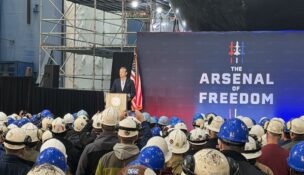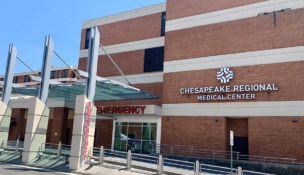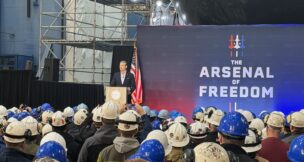Jefferson Lab project aids exploration of nucleus of an atom
Joan Tupponce //December 1, 2017//
A recently completed project at the Department of Energy’s Jefferson Lab in Newport News will help nuclear physicists look deeper into the nucleus of the atom.
The 12 GeV (gigaelectronvolts) upgrade of the Continuous Electron Beam Accelerator Facility (CEBAF) was completed Sept. 27. Construction on the $338 million project started in 2008.
“We originally had a capability of delivering 6 GeV, and this doubled the maximum energy of the electron beam,” says Allison Lung, chief planning officer and director of the 12 GeV upgrade project.
The lab also added a fourth experimental hall on the original campus and upgraded equipment in the three existing halls. “Our electron accelerator is shaped like a racetrack about seven-eights of a mile around,” says Lung. “We had three experimental halls at one end of the original campus, and we added the fourth hall at the opposite end of the racetrack to enable a new area of physics research.”
The one-of-a-kind CEBAF is the world’s most powerful microscope for studying the nucleus of the atom. “The upgrade will help us see inside the atom further and with better resolution. The new science enabled by the fourth experimental hall is designed to look at why quarks, the most fundamental building block of matter, are never found alone,” Lung says. “No facility in the world is able to study that question.”
When the original CEBAF was built in the 1980s, it was geared toward two-dimensional imaging of neutrons and protons. The upgrade allows for three-dimensional work. “We are additionally searching for signatures of new physics that go beyond what is taught in schools in order to open up new questions and take us into new areas of exploration,” Lung says.
The new capabilities will allow the CEBAF to realize “the next horizon for understanding the glue that is holding quarks together,” Lung says.
About 1,500 scientists from the U.S. and around the world come to the Jefferson Lab to perform experiments. “Research at Jefferson Lab is the basis for one-third of the [doctoral degrees] in nuclear physics in the U.S.,” Lung says.
s















